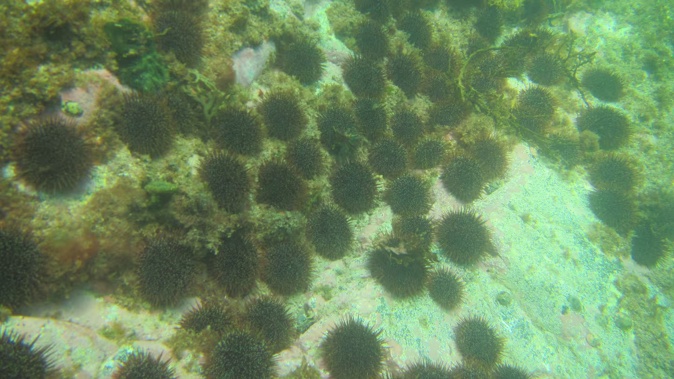
Kina barrens are a major issue in Northland and elsewhere, with the phenomenon a sign that the marine ecosystem is badly out of balance.
Now, Minister for Oceans and Fisheries Shane Jones, who held a public meeting on the issue in the Far North in May, has introduced new tools to help deal with the problem.
About 200 people turned up at the Awanui meeting to listen to his talk and give feedback and ideas on how the issue should be handled. A kina barren is an area that has been depleted of all life — except for kina — largely due to overfishing and the rapid reproduction of kina because of rising sea temperatures.
Kina barrens can devastate entire coastlines and the attendees urged Jones to introduce measures to deal with the problem, and he promised to do so before summer.
Also, Fisheries NZ sought feedback on two proposed measures to help address kina barrens and rebalance local ecosystems. The proposals included a new special permit for targeted culling, harvesting or translocation of kina and long-spined sea urchins, and options to increase recreational daily bag limits for kina in the Auckland East Fisheries management area, which includes Northland’s east coast.
“Increasing the recreational daily catch limit for kina around the northeastern North Island and a new special permit to remove kina will help tackle kina barrens,” Jones said of the new tools he has introduced.
“Kina barrens are areas of rocky reef where healthy kelp forests have been consumed by an overpopulation of kina and long-spined sea urchins to form a barren space that is detrimental to other sea life.
“I’ve made addressing kina barrens a priority, and it’s clear from the feedback received on these measures that many New Zealanders share my concerns.”
He said the decision to increase the recreational daily catch limit for kina in the Auckland East Fisheries management area to 150 and approve a new special permit that will allow targeted removal of kina will enable communities to get involved in combating this issue.
About 200 people turned up to a meeting in Awanui in May organised by Minister for Oceans and Fisheries Shane Jones on how kina barrens in the Far North can be dealt with.
The new recreational daily limit will come into effect on August 1, and the special permit will be available for applications from today. Both the daily limit and special permit apply to long-spined sea urchins as well as kina.
“These measures won’t fix kina barrens immediately or on their own, but they will give people more tools to take on kina barrens in their rohe and greater ownership over the health of their coastline,” Jones said.
The new recreational daily limit of 150 kina per fisher will apply along the North Island’s east coast from North Cape in Northland to Cape Runaway in the Bay of Plenty. This is the Auckland East Fisheries management area. The special permit allows people or organisations to harvest, cull or move kina to help habitat restoration or to prevent kina barrens developing.
Permits will go through an application process that will include providing evidence of a current or potential kina barren in the area before it is approved. Special permits can be applied for in any part of New Zealand.
“This is not the end of the work I will do on kina barrens and I have directed my officials to expand our scientific knowledge of the problem and investigate further options for dealing with it,’’ he said.
“I’d like to acknowledge everyone who took the time to provide feedback on these measures, as well as the hundreds of people who joined me in person [at the Awanui meeting] to discuss kina barrens in Northland on May 10. I’m confident that together we can tackle kina barrens and restore our coasts with healthy kelp forests that support biodiversity and thriving kaimoana.”
More information can be found at mpi.govt.nz.
Take your Radio, Podcasts and Music with you









